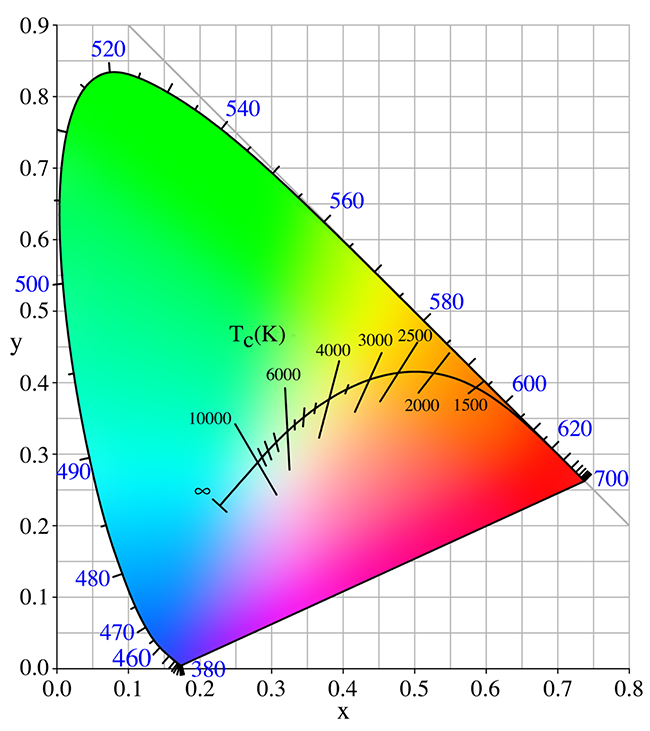أساسيات معايرة الشاشة
The Basics of Monitor Calibration
The subject of monitor calibration and profiling can be quite difficult to understand not only for a beginner, but also for professionals working in the field. With so many different hardware and software components, color profiles, bit depth and other related terminologies, one can get quickly confused and lost, potentially ending up with a rather poor working environment. Having a badly-calibrated monitor is not only counter-productive, it is also potentially harmful for one’s business, especially when dealing with paying customers and clients. Due to the complexity of the topic, our team at Photography Life requested help from a real expert, who will be providing detailed information on how to properly calibrate monitors for photography needs. But first, some basic concepts need to be understood. This particular article is just an introduction to cover the basics of calibration and profiling, without going into too many technical details.
قد يكون من الصعب جدًا فهم موضوع معايرة الشاشة وتوصيفها، ليس فقط للمبتدئين، ولكن أيضًا للمحترفين العاملين في هذا المجال. مع وجود العديد من مكونات الأجهزة والبرامج المختلفة، وملفات تعريف الألوان، وعمق البت والمصطلحات الأخرى ذات الصلة، يمكن للمرء أن يرتبك ويضيع بسرعة، ومن المحتمل أن ينتهي الأمر ببيئة عمل سيئة إلى حد ما. إن وجود شاشة تمت معايرتها بشكل سيئ لا يؤدي إلى نتائج عكسية فحسب، بل قد يكون أيضًا ضارًا بأعمالك، خاصة عند التعامل مع العملاء الذين يدفعون. نظرًا لتعقيد الموضوع، طلب فريقنا في Photography Life المساعدة من خبير حقيقي، والذي سيقدم معلومات مفصلة حول كيفية معايرة الشاشات بشكل صحيح لاحتياجات التصوير الفوتوغرافي. لكن أولاً، يجب فهم بعض المفاهيم الأساسية. هذه المقالة بالذات هي مجرد مقدمة لتغطية أساسيات المعايرة والتنميط، دون الخوض في الكثير من التفاصيل الفنية.
The Basics of Monitor Calibration
The subject of monitor calibration and profiling can be quite difficult to understand not only for a beginner, but also for professionals working in the field. With so many different hardware and software components, color profiles, bit depth and other related terminologies, one can get quickly confused and lost, potentially ending up with a rather poor working environment. Having a badly-calibrated monitor is not only counter-productive, it is also potentially harmful for one’s business, especially when dealing with paying customers and clients. Due to the complexity of the topic, our team at Photography Life requested help from a real expert, who will be providing detailed information on how to properly calibrate monitors for photography needs. But first, some basic concepts need to be understood. This particular article is just an introduction to cover the basics of calibration and profiling, without going into too many technical details.
قد يكون من الصعب جدًا فهم موضوع معايرة الشاشة وتوصيفها، ليس فقط للمبتدئين، ولكن أيضًا للمحترفين العاملين في هذا المجال. مع وجود العديد من مكونات الأجهزة والبرامج المختلفة، وملفات تعريف الألوان، وعمق البت والمصطلحات الأخرى ذات الصلة، يمكن للمرء أن يرتبك ويضيع بسرعة، ومن المحتمل أن ينتهي الأمر ببيئة عمل سيئة إلى حد ما. إن وجود شاشة تمت معايرتها بشكل سيئ لا يؤدي إلى نتائج عكسية فحسب، بل قد يكون أيضًا ضارًا بأعمالك، خاصة عند التعامل مع العملاء الذين يدفعون. نظرًا لتعقيد الموضوع، طلب فريقنا في Photography Life المساعدة من خبير حقيقي، والذي سيقدم معلومات مفصلة حول كيفية معايرة الشاشات بشكل صحيح لاحتياجات التصوير الفوتوغرافي. لكن أولاً، يجب فهم بعض المفاهيم الأساسية. هذه المقالة بالذات هي مجرد مقدمة لتغطية أساسيات المعايرة والتنميط، دون الخوض في الكثير من التفاصيل الفنية.

 The segments that crosses blackbody locus curve have the same Correlated Color Temperature (CCT). Daylight locus runs as a parallel curve moved a few dE units towards cyan
The segments that crosses blackbody locus curve have the same Correlated Color Temperature (CCT). Daylight locus runs as a parallel curve moved a few dE units towards cyan
تعليق